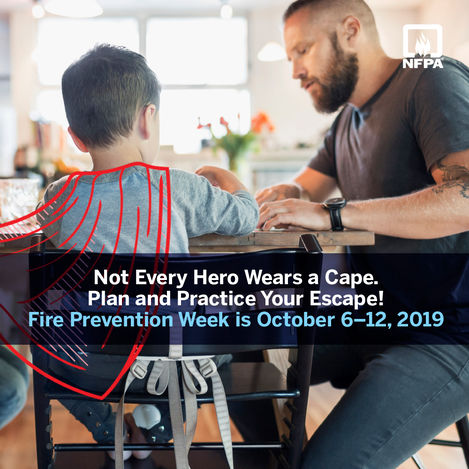Motorcycle Safety Tips: Staying Safe and Saving Lives

This blog often contains safety tips and cautionary tales, so my regular readers might be surprised to learn that I used to ride a motorcycle myself! Several of my clients, close friends, and family members ride, including my brother Alan (who would be quick to tell you I do not belong on a motorcycle and that my decision to give up riding was a good one for all). The photo above is from a trip Alan and I took several years ago with two of our friends to ride a famous stretch of road called the Tail of the Dragon. This post is for Alan, my clients and friends, and all of us who share the road with riders.
Motorcycles can be practical — less expensive than other vehicles, more economical to operate, easier to park and to garage. But, let’s face it, a big part of their appeal is the exhilaration of cruising the open road while controlling a beast of a machine with the wind blowing and an unobstructed experience of your surroundings. Summer’s coming and we’re all going to see a lot more bikers on the roads. While motorcycles can be a lot of fun, motorcycle crashes are much more likely to cause severe injuries, fatalities, and extensive medical costs than car or truck accidents. Riding on two wheels is less stable, making the rider’s skill level more important in maintaining control. Their smaller size makes them easier to be overlooked by other drivers. The lack of a protective cage and safety features, like seatbelts and airbags, increase the likelihood that crashes will result in more severe injuries. The NHTSA found a motorcyclist is 20 times more likely to be killed in a collision and 4 times more likely to be injured than occupants of other types of vehicles. Motorcycle accidents have an 80% injury or mortality rate, while car accidents are around 20%.
Illinois Motorcycle Crash Statistics
- In a recent report, The Illinois Department of Transportation (IDOT) found crashes involving motorcycles accounted for only 1.1% of the total crashes, but 15.4% of the fatal crashes and 3.5% of injury crashes.
- National figures are similar: though only 3% of registered vehicles and 0.6% of all vehicle miles traveled in the US, motorcyclists account for 14% of all traffic fatalities.
- In states without the Universal Helmet Act, like Illinois, 57% of cyclists killed in 2019 did not wear a helmet (compared to 9% in states with the Act).
Safety Tips for Illinois Motorcycle Riders
If you’re a rider, it’s important to be aware of the following, even if you consider yourself a veteran of the open road:
- Get properly trained. At minimum, complete a basic safety course authorized by IDOT. Learn the rules of the road and appropriate actions to take in unpredictable riding situations. More advanced training’s even better.
- Wear a helmet that’s US DOT approved, fits snugly, and is strapped at all times. That alone is about 37% effective in preventing death and 67% effective in preventing brain injuries.
- Wear protective clothing. Jacket and pants should cover your arms and legs completely. Leather or sturdy synthetic material, like Kevlar, provides the best protection. Durable gloves that allow for a good grip are also important.
- Check your motorcycle before you mount it (tires, fluids, headlights and tail lights, and turn signals).
- Check the bike after you mount (clutch, throttle, mirrors, brakes, and horn).
- Be visible — the NHTSA found 75% of motorcycle accidents resulted from other drivers not seeing them. Avoid other drivers’ blind spots, drive with headlights on even during the day, wear reflective or bright clothing, and always use signals. Never assume other drivers see you.
- Keep a safe distance. Tailgating’s never safe, but particularly hazardous for a biker. Stay at least 4 seconds away from a vehicle in front of you.
- Be observant and watch for road hazards.
- Make sure all cargo is secured and balanced. If you’re carrying a passenger, they should sit as far forward as possible, directly behind you, keeping both feet on the foot rests at all times, and holding on firmly to your waist, hips, or belt.
- Never ride while sleepy or tired, or drug or alcohol impaired. Also, good to avoid driving when angry. You’ll be distracted, not focused, and more prone to make aggressive, bad choices.
- Check the weather before heading out and be prepared to change plans when appropriate.
- Of course, follow all the traffic laws and signals.
Safety Tips for Motorists Interacting with Motorcycles
Over half of all fatal motorcycle crashes involve another vehicle, and most of the time the other motorist is at fault. Studies show the leading cause of motorcycle accidents is the failure of other motorists to recognize, notice, or detect the presence of the motorcycle on the road. We all have to raise our awareness of, and knowledge about, motorcycles:
- Because a narrow profile, a bike can easily be hidden in the blind spot or masked by other objects. Take extra time to look out for them, especially when changing lanes or turning at intersections.
- Because they’re smaller, they can look farther away and it can be difficult to judge their speed. Assume it’s closer than it looks.
- A biker may slow by downshifting or rolling off the throttle, not activating the brake light. At intersections, they may slow down without visual warning, requiring more following distance.
- Turn signals usually aren’t self-canceling and they sometimes forget to turn them off after a turn or lane change. Make sure the signal is for real.
- Stopping distance may be impaired by slippery pavement, sand and gravel, et cetera. Allow more following distance behind a bike.
- Bikers often have to adjust position within a lane for a number of reasons, but it’s never to allow you to share the lane with them
Riding a motorcycle can be an adventurous and exhilarating experience. But the harsh reality is that it can be very dangerous. All of us, whether biker or motorist, have to do our best to share our roads safely, so everyone gets home to their families in one piece.
Illinois Motorcycle Safety Laws
Of course, bikers have to follow all Illinois traffic laws. But, in addition there are some motorcycle specific laws in the Illinois Vehicle Code. Some main points:
- Before even getting on, you must have proper licensing, registration, titling, and insurance –
- Licensing: a Class L license (for bikes with less than 150 cc displacement), or a Class M license for all others
- Registering and Titling: regardless of how obtained, the bike must be registered and titled with the Illinois Secretary of State
- Insurance: Illinois requires carrying the same minimum liability insurance as other motorists
- When operating, motorcyclists must be protected by glasses, goggles, or a transparent shield.
- Passengers must ride on a passenger’s seat, which must have footrests.
- Wheelies (riding on one wheel) are prohibited.
- Unless there’s an unobstructed traffic lane available, bikers are prohibited from passing between two vehicles going in the same direction (lane splitting).
- Motorcyclists are prohibited from passing vehicles on the right, unless there is unobstructed pavement at least 8 feet wide to the right of the vehicle.
- At present, Illinois does not require wearing a helmet for adults. Like the Illinois Department of Transportation, we highly recommend wearing a helmet, and recommend always having minors on a motorcycle wear a helmet.



